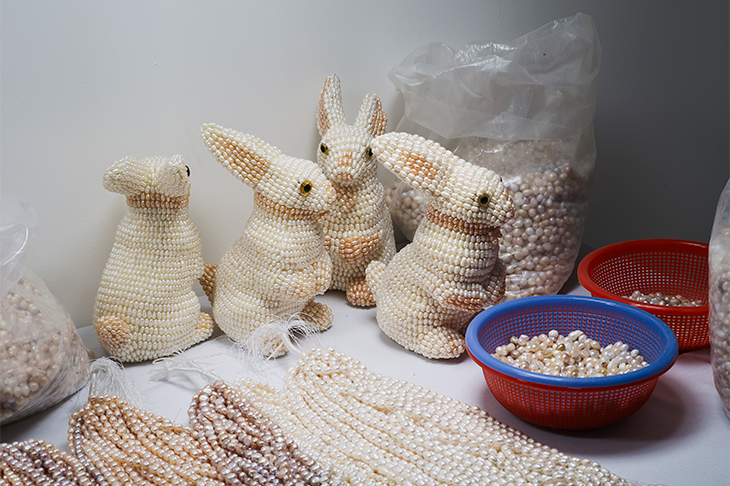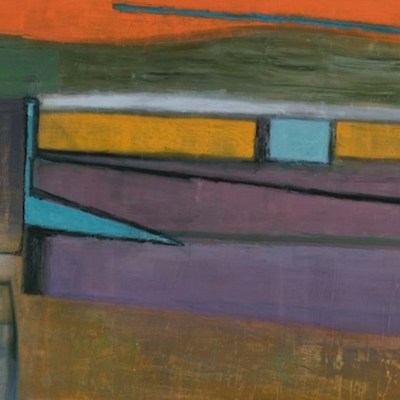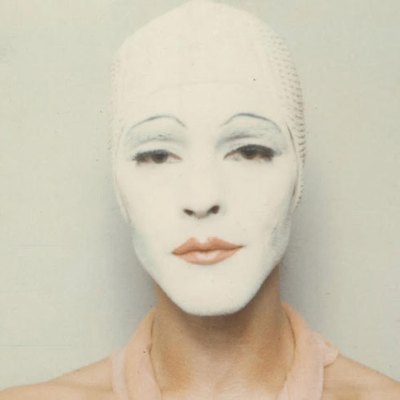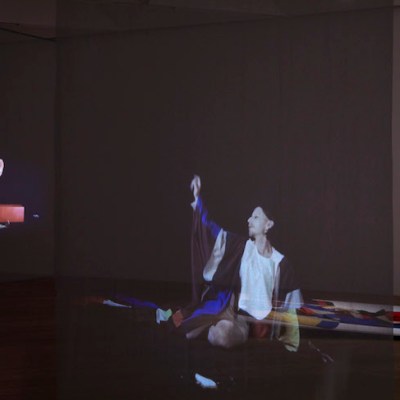Arriving at the newly opened Goldsmiths Centre for Contemporary Art (Goldsmiths CCA) earlier this month, members of the press were hurried past a small group of students, who were handing out print-outs, blowing vuvuzela horns and holding up a large banner bearing the words: ‘Who keeps the cube white?’ The students were protesting as part of the Justice for Cleaners campaign at Goldsmiths, which opposes the changes made to cleaners’ shifts by the outside contractor the university employs and wants to bring services in-house. From inside the building, as I stood in the first gallery watching Mika Rottenberg’s video installation Mary’s Cherries (2004), the protestors remained visible and their vuvuzelas audible.
Rottenberg, whose videos, sculptures and installations fill all three floors of the building, recently issued a statement of support for Justice for Cleaners. She felt a ‘personal responsibility’, she wrote, to address the campaign, particularly given the correspondence between its mission and that of her own artistic work: to expose the ‘hidden labor’ that is ‘embedded in everything we consume and produce’. If all this serves to make Mika Rottenberg sound rather serious, or didactic, it shouldn’t. Over the past decade or so, she has produced some of the weirdest, funniest work of any artist on any topic, not least the absurdities of global capitalism.
Installation view of ‘Mika Rottenberg’ at Goldsmiths Centre for Contemporary Art, 2018. Photo: Andy Keate. Courtesy the artist and Goldsmiths CCA

Mary’s Cherries is the earliest and simplest piece in the exhibition. A small video monitor is suspended in a room-like box, with wooden walls coated in stucco and a floor carpeted in brown patterned textile. A plastic fan attached to the bottom of the structure, which is raised on four brick columns, whirs noisily inches from the gallery floor. On the monitor a woman appears in a boxy enclosure, with the same stuccoed walls and brown carpet. Her fingers are spread out beneath a lightbulb, which seems to be making her nails grow at a rapid rate. She cuts the nails, which are painted bright red, and drops them through a hole in the floor: the camera travels down, into an identical room, where another woman sits, peddling on a makeshift bike to power the lightbulb. This woman hammers away at the nail clippings with her fist, and passes them to a third woman, who presses them together like a ball of plasticine, until they are transformed into shiny red maraschino cherries. It is both repulsive and enthralling, holding your attention as you try to understand how the production process works.
Installation view of ‘Mika Rottenberg’ at Goldsmiths Centre for Contemporary Art, 2018. Photo: Andy Keate. Courtesy the artist and Goldsmiths CCA

A discombobulating blend of whimsy and darkness also pervades Rottenberg’s more recent work, although the environments in which her systems of production and consumption unfold have become a lot more complex. Her acclaimed films explore worlds such as the global pearl industry (NoNoseKnows [2015]) and the proliferation of Chinese shops and restaurants on the Mexico–California border (Cosmic Generator [2017]). We follow a cast of nameless and mostly wordless workers and consumers, nearly all women, as they seed pearls, walk through mazes of corridors, push food carts through the desert and carry out other activities ranging from the mundane to the ludicrous. The films are projected in high definition on massive screens in darkened spaces, accessed through intricate installations – a pearl shop, a concrete tunnel, a bingo ball machine and board on a revolving wall – that act as portals to the depicted places.
Installation view of ‘Mika Rottenberg’ at Goldsmiths Centre for Contemporary Art, 2018. Photo: Andy Keate. Courtesy the artist and Goldsmiths CCA
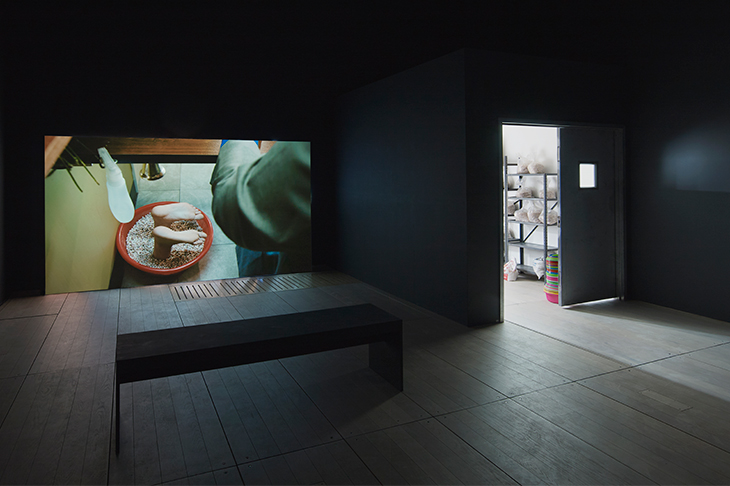
Rottenberg is not given to understatement. Her films are saturated with colour, every frame spilling over with detail. Their characters are often larger than life: the women of Mary’s Cherries are professional wrestlers, while the office worker in NoNoseKnows is played by the fetish model Bunny Glamazon, who is over 6 feet tall. Elsewhere in the exhibition, motorised sculptures in the shape of various body parts turn and bounce, sizzling frying pans emit plumes of smoke. The effect can be overwhelming; an assault on the senses – for the viewer, yes, but even more so for the individuals on screen. Perhaps one of the most memorable motifs in Rottenberg’s work is the sneeze, an involuntary response often symptomatic of an allergic reaction. In the short film Sneeze (2012), every time the suited man on screen man commits the eponymous act, a live rabbit appears on the table before him. Bunny Glamazon’s character in NoNoseKnows sits in a room filled with flowers, the pollen making her nose grow red and impossibly inflamed, resulting in an explosive sneeze that makes her expel streams of noodles on to a nearby plate. Her emissions, it is implied, will be supplied as food to the labourers in the pearl factory. Hyper-consumption in the 21st century is a disgusting business.
‘Mika Rottenberg’ is at Goldsmiths Centre for Contemporary Art until 4 November 2018.
